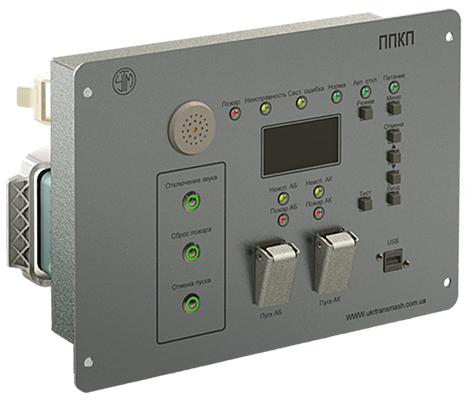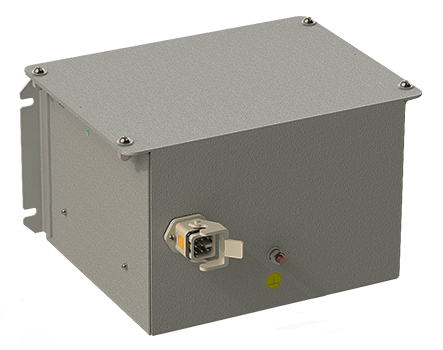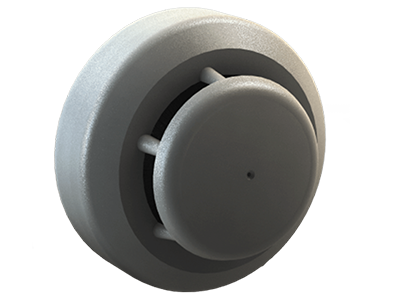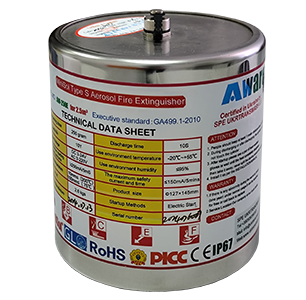Fire alarm and extinguishing system - ТYSA-1

System purpose
The TYSA-1 system is developed for the shunting locomotive ChME3 and can be adapted for other types of shunting locomotives
The system is designed for early detection of fire sources on rolling stock, notifying the locomotive crew of their locations, disconnecting technological equipment, and activating fire extinguishing means with audio notifications to the radio station
System ensures
- Reception and processing of electrical signals from fire detectors for detecting fire hazards in protected areas
- Continuous monitoring of the integrity of fire loops (detecting open circuits or short circuits) and the integrity (detecting open circuits) of connections to activation units
- Continuous monitoring of the operational state of control elements and activation units
- Detection of fire sources in protected areas and issuing visual and audible alarms to the driver about their location
- Generation of the "Fire" signal when fire detectors in two loops are triggered, as well as issuing a warning when one of the detectors is triggered by activating external alarm systems
- Disconnecting electrical equipment and delaying the activation of fire extinguishing substance (FE) for 30 seconds (programmable)
- Automatic and manual release of fire extinguishing substance in the protected area
- Automatic switching from the main power source to the backup and vice versa
- Monitoring of the status of the backup power source and battery charge
Structure
TYSA-1 is built on a modular principle
System components: PPKP, UPS, Detectors (heat, smoke), fire extinguishers
01.
PPKP
02.
IRP
03.
SPD
04.
Protectowire
Linear heat fire detector
The principle of operation of the detector involves the destruction of the insulating coating of the heat-sensitive polymer under the pressure of the conductors when the ambient temperature reaches a threshold value. As a result, the conductors connect with each other. This can occur at any point of overheating along the entire length of the detector




